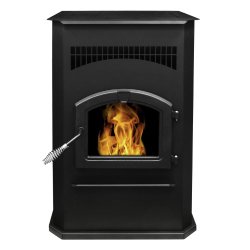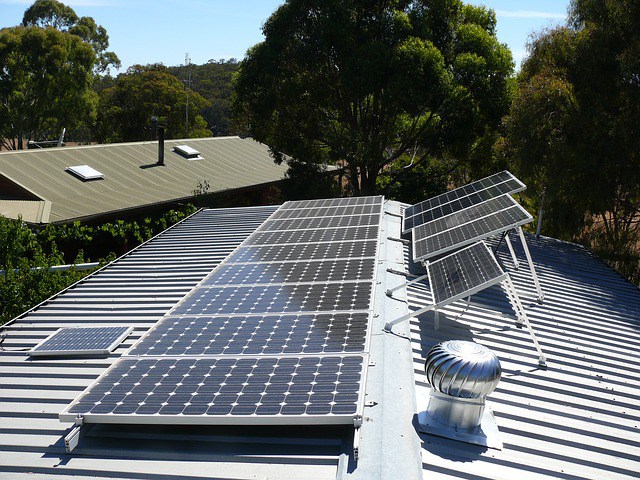
Are you comfortable and secure in your home? Would you still be comfortable and secure if you no longer had electricity or natural gas service? Can you get by without your furnace, stove, and refrigerator? You may be able to live comfortably under these conditions in mild weather, for a short time, but how long could you last in the winter? Loosing electricity for an extended period of time is not a far-fetched notion. Freezing rain caused an extended power outage at my residence a few years back. Fortunately that incident was localized. When the roads were cleared I was able to go out for supplies. Nevertheless, if I had not been able to heat my home, I would have had to leave. My food would have spoiled, and I may have returned to find extensive damage due to broken water pipes. My home and belongings would have been an easy target for looters.
The ice-storm I experienced was a rare occurrence, but not the only circumstance that can cause an extended power outage. A failure of the power grid could be the result of a terrorist attack, or simply due to an aging infrastructure. Additionally, an outage caused by a tornado or earthquake can’t be ruled out as a possibility.
I don’t want to bug out!
In an effort to avoid problems associated with bugging out, I’ve taken actions that allow me to remain in my home, comfortably and securely, for an extended period of time. I won’t discuss my ability to defend my family and property from looters, but I will describe the systems that enable me to live comfortably.
To be self-sufficient in my home I needed an alternative to my furnace, and that alternative needed to be able to function for an extended period of time, perhaps several months. At the same time, I needed the ability to keep food from spoiling, and to be able to cook. Being able to cook implies that I also have the ability to boil water, making it safe for drinking. I’ve accomplished those goals with two main systems.
My alternative heating device is a pellet-burning stove. The stove can run for 12 hours or more without attention. This solution requires me to keep a good supply of wood pellets on hand. The stove burns one bag of pellets a day when the weather is cold, and less than that in milder conditions. I prefer to have no less than 10 bags available.
 The second of my two main systems is an off-grid solar electric system. I’ve sized this system in such a way that it can provide the electricity required by the pellet stove, especially at night, and fully recharge the batteries during the day. Additional capacity provides the necessary power for running a refrigerator, lights, for cooking, and for a variety of other devices.
The second of my two main systems is an off-grid solar electric system. I’ve sized this system in such a way that it can provide the electricity required by the pellet stove, especially at night, and fully recharge the batteries during the day. Additional capacity provides the necessary power for running a refrigerator, lights, for cooking, and for a variety of other devices.
The solar electric system was designed to meet my basic needs during an extended emergency. While the system produces more electricity than I need during mild weather conditions, I have to keep an eye on energy usage when it’s very cold outside. I have a few solar panels, not an entire roof full. The batteries store energy generated from the solar panels during the day, and apply that energy to the pellet stove, refrigerator, and other devices as needed.
Since my solar electric system is dependent upon sunshine, and since the sun sometimes doesn’t shine, I’ll have to conserve energy at times. I’ve discovered many opportunities to conserve, and still remain comfortable in my home. I can cut back on the biggest energy user, the pellet stove, by limiting heating to one or two rooms. On other occasions I may choose to use an electric blanket, not using the pellet stove at all. I’ve found that my small chest freezer uses much less electricity than my full-size refrigerator. Using that instead I can keep food from spoiling, and have enough energy left over for cooking and lighting. My lights are the LED kind, using only 10 watts each.
The main components of my solar electric system are:
7 – 85 watt solar panels mounted on my roof
6 – GC2 deep cycle batteries
1 – 60 amp Charge Controller
1 – 1100 Watt Pure Sine Wave Inverter
1 – Relay Driver (A programmable device used to provide battery protection and system automation)
1 – Automatic Transfer Switch (Used to switch between grid power and solar power)
Solar systems give you off-grid options many won’t have.
The Relay Driver allows me to better control energy use from the batteries, and therefore extend their life. While solar panels may last 25 years, battery life is dependent on how well they are maintained. I hope to get in excess of 5 years from the batteries by taking exceptional care of them. The relay driver prevents accidental over discharge. It does that by turning off the inverter (which powers all of the loads), when the battery voltage drops to a level that I programmed into the device. It does not turn the inverter on again until the batteries are fully charged.
The Automatic Transfer Switch allows me to use some of the solar-generated power to run my refrigerator on a day-to-day basis, therefore cutting back on my electric bill and recouping some of the cost of the system. I override this control, with a switch, when the grid power fails.
I’ll probably add one or two more solar panels to the system this year. I’d like to see my batteries recharge faster on cloudy days. Additional solar panel capacity will also allow me to use appliances during the day, without significantly reducing charging power.
Providing design details for a solar electric system is beyond the scope of this article, but you can learn everything you need to know from the following site: http://www.wholesalesolar.com/
Start by determining your daily electricity needs in kilowatt-hours, and then determine how many solar panels and batteries you’ll need to meet those needs. Solar panel capacity should be high enough to fully recharge the batteries in a reasonable time, perhaps with one full day of sun. The battery bank should have sufficient capacity to operate all of the loads (stove, refrigerator, lights, etc.), all night long. And remember, batteries will last longer if they’re not discharged too deeply, too often.
A “Kill A Watt” meter is an inexpensive, but useful, tool for determining energy consumption of your devices. Look for that device at eBay or Walmart, you’ll be glad you did.
You may decide to purchase a prepackaged kit with everything you need. If so, it should have the ability to automatically remove the load, once the batteries reach a certain state of discharge. Accidental discharges beyond 50% will shorten the life of your expensive battery bank.
I don’t claim to be exceptionally well-prepared for a SHTF event, but at least I’ve made significant progress. I have a small stockpile of MRE’s, and a water-purification device. I’m also an avid gardener, and I save seeds. I can see myself using energy from my solar electric system to provide security lighting to my garden area. But now I’m just rambling.
Many thanks to the others who’ve provided advice here and I hope that the information I’ve provided inspires others to do similar things.





